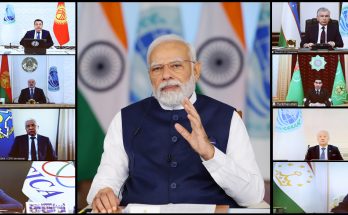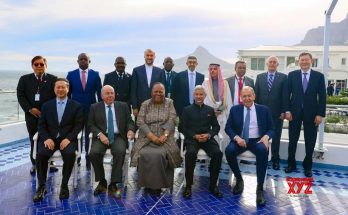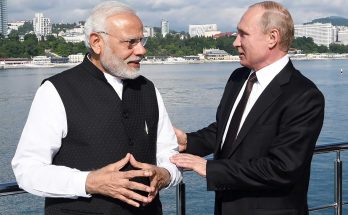DURBAN: It’s a revolution of sorts. In the balmy coastal city of Durban which birthed the Gandhi revolution more than a century ago, the seeds of a new rejuvenated South-South movement have been sown, with the BRICS leaders launching a pioneering Development Bank that will cater to the emerging economies and developing countries.
Defying sceptics, the two-day summit culminated with a unanimous decision by the leaders of Brazil, Russia, India, China and South Africa to set up a BRICS-led Development Bank that will finance development and infrastructure development not just in emerging economies, but also in the larger global South.
In another important step to cement the intra-BRICS economic architecture, the leaders of the world’s five emerging economies, which account for over a quarter of global GDP, also endorsed a $100-billion contingency reserve arrangement that will be deployed as a last resort in case of a serious crisis afflicting a BRICS country.
“We have decided to enter formal negotiations to establish a BRICS-led new development Bank based on our own considerable infrastructure needs, which amounts to around USD 4,5 trillion over the next five years, but also to cooperate with other Emerging Markets and Developing Countries in future,” said South African President Jacob Zuma, the host of the 5th BRICS summit.
“Our resolve extends further to also establish a BRICS Contingent Reserve Arrangement. We are working towards related initiatives in our economic deliberations to further strengthen our intra-BRICS cooperation,” he said.
The 5th BRICS summit has proved to be the most substantive one, with important headline-hogging outcomes that have the potential to create a new dialectics of development and geopolitics in the mutating international order.
Besides the Bank and the contingency reserve arrangement, the summit also saw important steps in deepening the framework of intra-BRICS cooperation. These pivotal steps included the setting up of a 25-member BRICS Business Council and the BRICS Think Tanks Council that seeks to create new pathways of South-South economic cooperation.
For India, which took the lead in shaping the Development Bank, the fruition of the key ideas that flowed from the 2012 New Delhi summit was a moment of special pride and resonance.
“It gives me great satisfaction to note that one of the ideas that we first discussed at New Delhi, that of instituting a mechanism to recycle surplus savings into infrastructure investments in developing countries, has been given a concrete shape during the Durban Summit,” said Indian Prime Minister Manmohan Singh. “Our Finance Ministers will now work to develop the details of this project,” he said.
The Indian prime minister underlined that the discussions at the Durban summit “demonstrated the similarity of our perspectives on many global issues, such as the situation in West Asia and efforts to rekindle global economic growth.”
Talking to Indian journalist, India’s Finance Minister P. Chidambaram explained key features of the Development Bank. “We (the finance ministers of the five countries) gave a big idea and that idea has now become a reality — that is the BRICS development bank,” Indian Finance Minister P. Chidambaram told journalists here, soon after the conclusion of the plenary session on the second day of the two-day summit.
He added that the finance ministers and officials of the two countries have been given a 12-month time-frame to work out modalities like the capital of the proposed bank, its domicile and the governance structure.
“We should have a nearly complete document when the leaders meet again in Brazil next March,” he added.
Delineating contours of the contingency reserve arrangement, Chidambaram said the bulk of the money, that is $41 billion, will be pledged by China, $18 billion each will come from India, Brazil and Russia, while South Africa has agreed to $5 billion.
Russian President Vladimir Putin welcomed the decision to launch the Development Bank and made a robust pitch for accelerating multi-polarity in international relations.
The Durban summit ended on a high note, with all the leaders of the emerging economies reaffirming their political will to take intra-BRICS cooperation to new heights and to transform the grouping into a powerful platform for a counter-narrative on key international issues.
This was reflected in the BRICS strong position on Syria and the warning to the West against military adventurism in Iran.
The Durban summit will go down in history as a defining moment in the trajectory of the South-South cooperation and marked the maturation of a grouping that started off as a forum focused on global economic governance issues, but has widened its horizon to include an ambitious all-encompassing global agenda to rekindle development in the emerging world and reclaim the weight of the global South in the international arena.
Manish Chand is Editor-in-Chief of India Writes, www.indiawrites.org. He is in Durban to report and analyse issues and outcomes of the 5th BRICS summit)
Author Profile

- Manish Chand is Founder-CEO and Editor-in-Chief of India Writes Network (www.indiawrites.org) and India and World, a pioneering magazine focused on international affairs. He is CEO/Director of TGII Media Private Limited, an India-based media, publishing, research and consultancy company.
Latest entries
 India and the WorldMarch 3, 2024India-Denmark Connect: Red carpet for Indians to Red Sea cooperation
India and the WorldMarch 3, 2024India-Denmark Connect: Red carpet for Indians to Red Sea cooperation India and the WorldFebruary 17, 2024Munich Security Conference: Jaishankar, Blinken focus on Red Sea, Middle East
India and the WorldFebruary 17, 2024Munich Security Conference: Jaishankar, Blinken focus on Red Sea, Middle East India and the WorldFebruary 14, 2024Munich Security Conference report: Migration, war top security threats
India and the WorldFebruary 14, 2024Munich Security Conference report: Migration, war top security threats India and the WorldJanuary 23, 2024With “Ram to Rashtra” mantra, Modi consecrates Ram temple for national renewal
India and the WorldJanuary 23, 2024With “Ram to Rashtra” mantra, Modi consecrates Ram temple for national renewal








